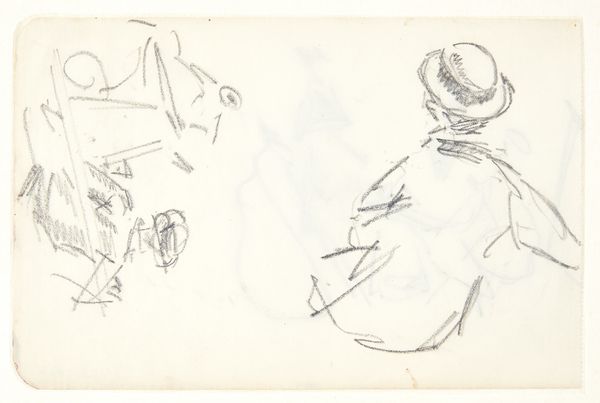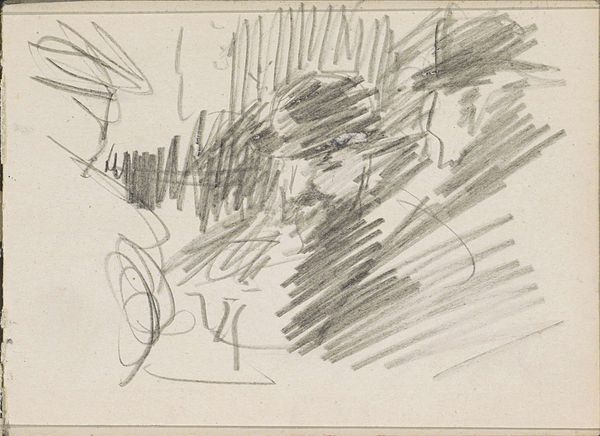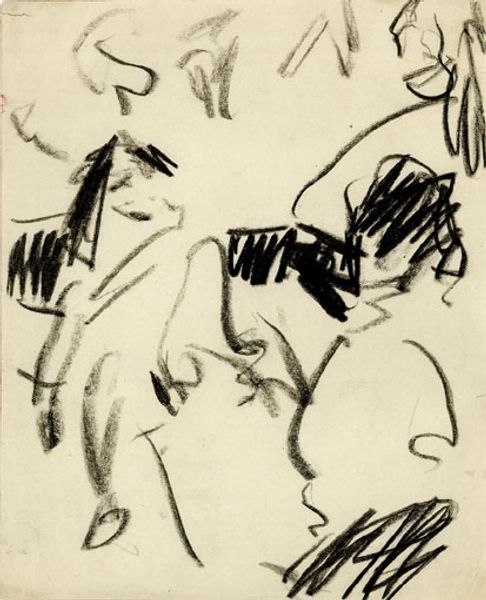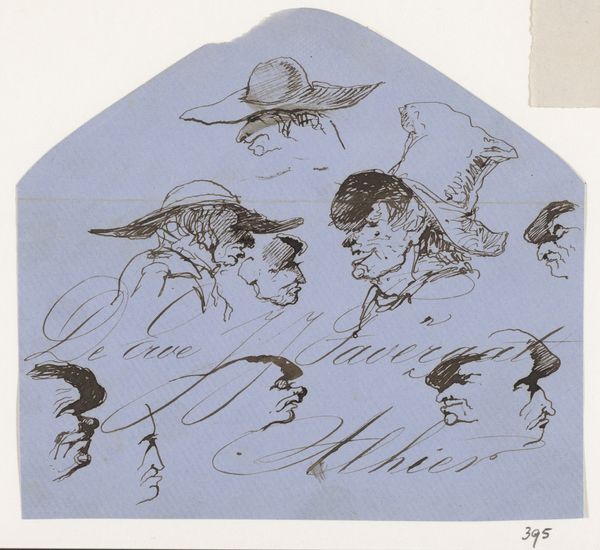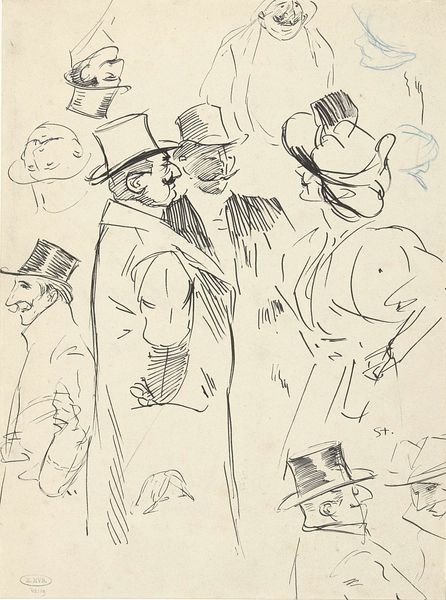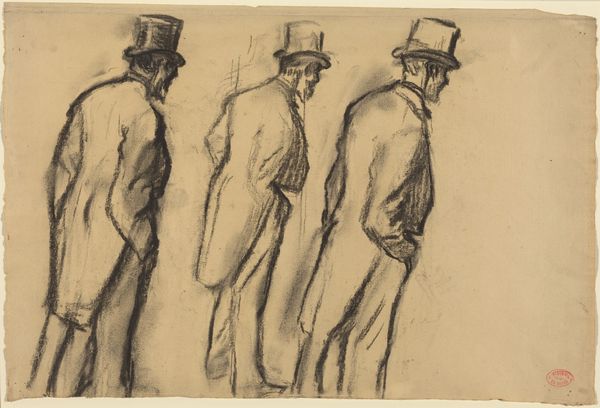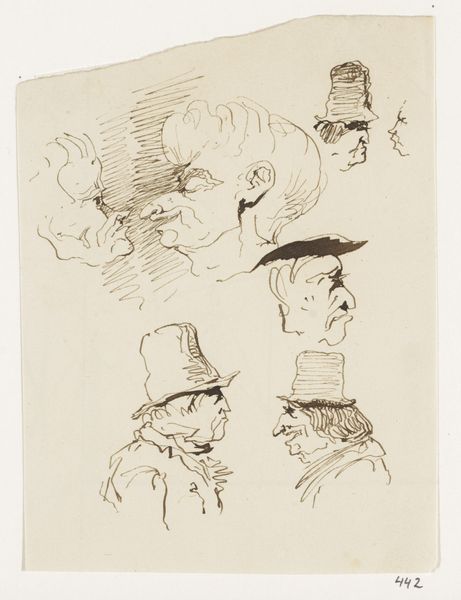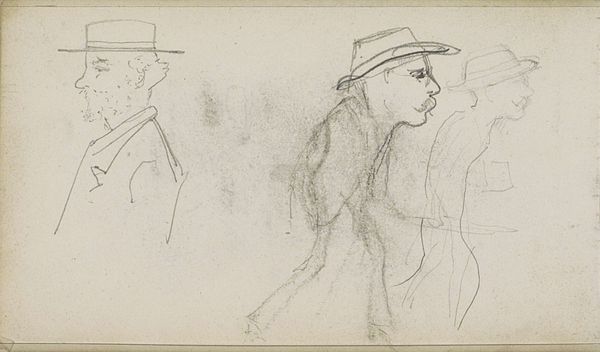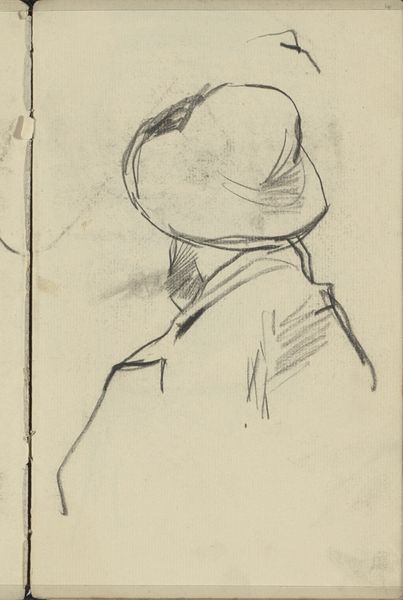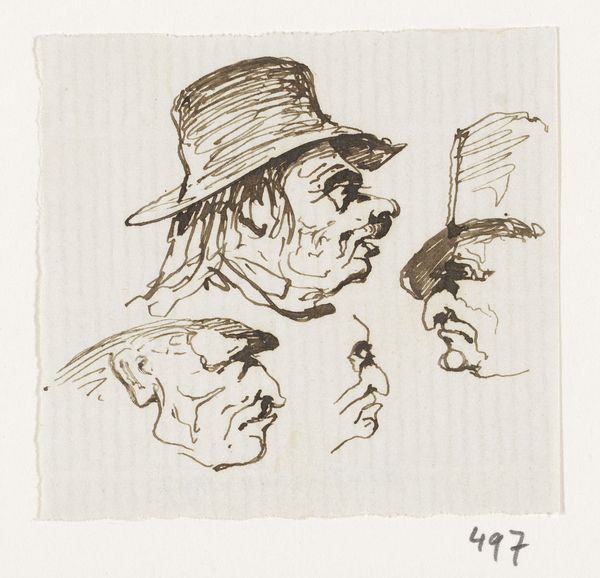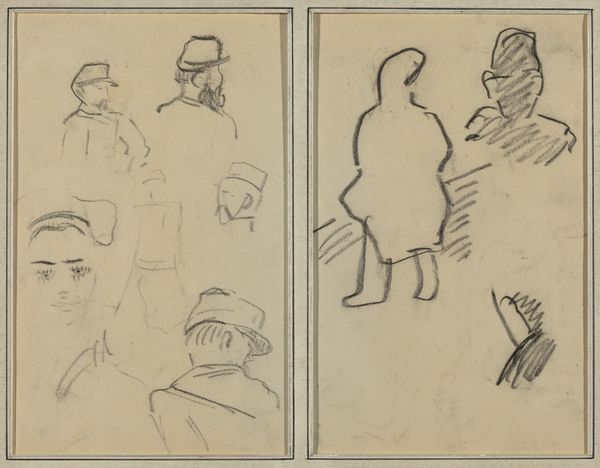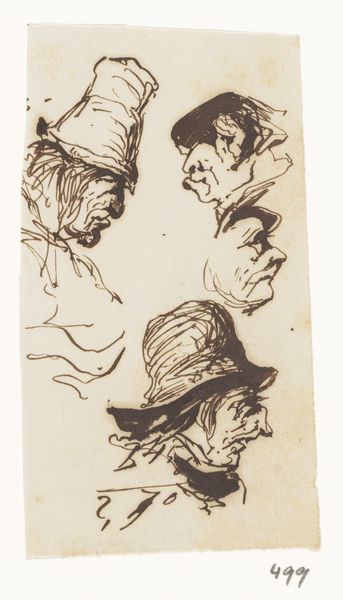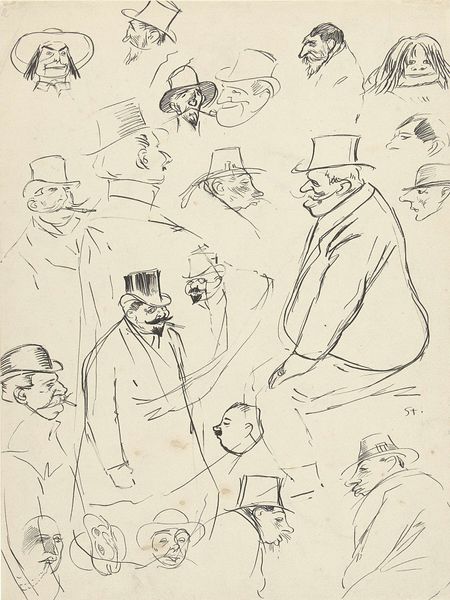
Copyright: Rijks Museum: Open Domain
Curator: This engaging sketchbook page is titled "Mannenhoofden met hoeden," or "Men's Heads with Hats," attributed to Isaac Israels, and created sometime between 1886 and 1934. Editor: I immediately notice the repetition and variation within these quick graphite and pen-and-ink sketches. The bowler hat as motif gives a strangely formal air, offset by the loose, gestural quality of the marks. Curator: The hats are certainly central. The bowler, especially during the late 19th and early 20th centuries, acted as a sartorial signifier of the middle class, suggesting urbanity, business, and a certain level of conformity in Europe. Editor: I wonder about that conformity, though. Israels captures each hat--and the suggestion of the head beneath--slightly differently. Each tilt, each shadow suggests an individual, even within that restrictive societal framework. It suggests coded identities. Curator: Interesting, because the very act of sketching, especially in a readily available medium like graphite on paper, positions this artwork as preliminary, almost like studies for a larger painting that was perhaps never executed. We are peering into Israels' working process, seeing him consider variations of form and composition. He is sketching labor in progress. Editor: Indeed. Yet consider the hat itself: The round shape softens what would otherwise be severe angles of business. These curves carry connotations, don't they? Comfort, perhaps a hint of humor—softening rigid structures, like the figures hinted at here? Curator: Perhaps that’s the power of close observation; through the filter of his tools of production he transforms it. For instance, looking at how light and shadow articulate the form; this creates depth where only outline existed, a crucial step in pictorial problem solving, and an index into social realities, but mostly, the materiality of painting itself. Editor: Agreed. The hats function on many levels: social markers, artistic exercises in capturing form, carriers of implied narratives—silent yet communicative. They take on new and diverse meaning with the passage of time. Curator: Thinking about how artists and other workers engage with familiar objects through repetition offers insightful lessons on creativity, labor, and its rewards. Editor: Ultimately, it prompts reflections on individual expression within the confines of cultural norms and artistic process, too.
Comments
No comments
Be the first to comment and join the conversation on the ultimate creative platform.
